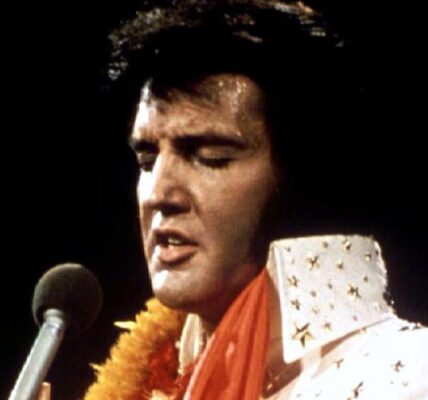Turning 40 marks a significant milestone, and with it often comes a new set of challenges when it comes to weight management. You might find that the strategies that worked in your 20s and 30s are no longer as effective. If you’re wondering about the Most Effective Way To Lose Weight After 40, you’re not alone. This comprehensive guide is designed to provide you with science-backed strategies, practical tips, and the motivation you need to achieve sustainable weight loss and a healthier lifestyle in your 40s and beyond. We’ll explore the physiological changes that occur as we age and tailor an approach that works with your body, not against it.
Understanding the Weight Loss Landscape After 40
As we age, our bodies undergo several changes that can impact weight management. Metabolism naturally slows down, muscle mass tends to decrease (a process called sarcopenia), and hormonal shifts can occur, especially for women approaching menopause. These factors can make it feel like weight loss is an uphill battle. However, it’s crucial to understand that losing weight after 40 is absolutely achievable. It simply requires a more nuanced and strategic approach than in earlier years. It’s not about fad diets or extreme measures, but about adopting sustainable lifestyle changes that promote both weight loss and overall well-being.
Why is Weight Loss Different After 40?
Several key factors contribute to the changing landscape of weight loss as you enter your 40s:
- Slower Metabolism: Your basal metabolic rate (BMR), the number of calories your body burns at rest, naturally declines with age. This means you burn fewer calories throughout the day, even when performing the same activities.
- Muscle Loss: Starting in your 30s, you begin to lose muscle mass if you don’t actively work to maintain it. Muscle tissue burns more calories than fat tissue, so less muscle mass further contributes to a slower metabolism.
- Hormonal Changes: Both men and women experience hormonal shifts in their 40s. For women, perimenopause and menopause can lead to fluctuations in estrogen and progesterone, which can affect fat distribution and increase fat storage, particularly around the abdomen. For men, testosterone levels may gradually decline, also influencing muscle mass and metabolism.
- Lifestyle Factors: Life in your 40s often comes with increased responsibilities, career demands, and family commitments. These factors can contribute to higher stress levels, less time for exercise, and potentially less healthy food choices, all of which can hinder weight loss efforts.
“It’s essential to recognize that weight loss after 40 isn’t just about calories in versus calories out,” says Dr. Sarah Jenkins, a Registered Dietitian specializing in adult weight management. “It’s about understanding your changing physiology and adopting a holistic approach that addresses diet, exercise, stress, and sleep.”
The Cornerstone of Effective Weight Loss: Nutrition
Nutrition plays a pivotal role in any successful weight loss journey, and it becomes even more critical after 40. Focusing on nutrient-dense foods and making smart dietary choices is key to supporting your metabolism and overall health.
Prioritize Protein Intake
Protein is your ally in weight loss, especially as you age. It helps preserve muscle mass, which is crucial for maintaining a healthy metabolism. Protein also promotes satiety, keeping you feeling fuller for longer and reducing cravings. Aim to include a source of lean protein at each meal.
- Lean Protein Sources: Chicken breast, turkey, fish (salmon, tuna, cod), lean beef, beans, lentils, tofu, Greek yogurt, eggs.
Embrace Fiber-Rich Foods
Fiber is another essential nutrient for weight loss and overall health. It aids in digestion, helps regulate blood sugar levels, and, like protein, promotes satiety. Fiber-rich foods are also typically lower in calories and packed with vitamins and minerals.
- High-Fiber Foods: Fruits (berries, apples, pears), vegetables (broccoli, spinach, carrots), whole grains (oats, quinoa, brown rice), legumes (beans, lentils, chickpeas), nuts, and seeds.
Focus on Healthy Fats
Not all fats are created equal. Healthy fats, such as monounsaturated and polyunsaturated fats, are beneficial for heart health and can support weight loss. They also contribute to satiety and help your body absorb essential vitamins.
- Sources of Healthy Fats: Avocados, olive oil, nuts (almonds, walnuts), seeds (chia seeds, flaxseeds), fatty fish (salmon, mackerel).
Limit Processed Foods, Sugary Drinks, and Excessive Alcohol
Processed foods are often high in calories, unhealthy fats, sodium, and added sugars, while being low in nutrients. Sugary drinks are liquid calories that provide little to no nutritional value and can lead to weight gain. Excessive alcohol consumption also adds empty calories and can hinder weight loss efforts. Minimizing these items in your diet will make a significant difference.
- Foods to Limit: Fast food, processed snacks (chips, cookies, sugary cereals), sugary drinks (soda, juice, sweetened coffee drinks), excessive amounts of alcohol.
Practice Mindful Eating and Portion Control
Being mindful of your eating habits and practicing portion control are crucial for managing calorie intake. Pay attention to your hunger and fullness cues, eat slowly, and avoid distractions while eating. Using smaller plates and measuring portions can also be helpful.
“It’s not about deprivation, but about making conscious choices,” emphasizes Dr. Jenkins. “Focus on nourishing your body with whole, unprocessed foods and being mindful of your portion sizes. Small, consistent changes can lead to significant results over time.”
To further understand how to incorporate healthy eating into your weight loss journey, you might find valuable insights in articles discussing related topics. For example, exploring resources on the best way to lose weight for women over 50 can provide additional context and strategies that resonate with the challenges faced after 40.

Woman preparing a colorful and nutritious salad in a bright kitchen, focusing on fresh vegetables and lean protein.
Exercise: Your Metabolic Booster After 40
Exercise is an indispensable component of the most effective way to lose weight after 40. It not only burns calories but also helps combat muscle loss and boost your metabolism. A well-rounded exercise plan should include both cardiovascular training and strength training.
Incorporate Strength Training
Strength training, also known as resistance training, is particularly important after 40 because it helps build and maintain muscle mass. More muscle mass means a higher metabolism, which makes it easier to lose weight and keep it off. Aim for at least two strength training sessions per week, targeting all major muscle groups.
- Strength Training Exercises: Weightlifting (using dumbbells, barbells, or machines), bodyweight exercises (squats, push-ups, lunges), resistance band exercises.
Engage in Regular Cardiovascular Exercise
Cardiovascular exercise, or cardio, is essential for burning calories and improving heart health. Choose activities you enjoy and can sustain long-term. Aim for at least 150 minutes of moderate-intensity cardio or 75 minutes of vigorous-intensity cardio per week.
- Cardio Activities: Brisk walking, jogging, running, cycling, swimming, dancing, hiking.
Don’t Underestimate NEAT (Non-Exercise Activity Thermogenesis)
NEAT refers to the calories you burn through activities that are not structured exercise, such as walking, gardening, taking the stairs, and fidgeting. Increasing your NEAT can contribute significantly to your daily calorie expenditure.
- Ways to Increase NEAT: Take the stairs instead of the elevator, walk or cycle for short distances, stand up and move around regularly throughout the day, engage in active hobbies like gardening or dancing.
“Consistency is key when it comes to exercise,” advises Dr. Jenkins. “Find activities you enjoy and can realistically incorporate into your routine. Even small amounts of regular exercise can make a big difference over time.”
Advertisement
If you are specifically aiming to reduce abdominal fat, exploring resources on how to lose belly fat women over 40 might provide targeted exercises and strategies that can be particularly helpful in addressing this common concern for women in their 40s.

Woman in her 40s strength training with dumbbells in a gym, focused on building muscle mass.
The Power of Lifestyle Factors: Sleep and Stress Management
Beyond diet and exercise, lifestyle factors like sleep and stress management play a crucial role in the most effective way to lose weight after 40. Poor sleep and chronic stress can disrupt hormones, increase cravings for unhealthy foods, and hinder weight loss efforts.
Prioritize Quality Sleep
Aim for 7-9 hours of quality sleep per night. Adequate sleep helps regulate hormones like cortisol and ghrelin, which influence appetite and fat storage. Establish a regular sleep schedule, create a relaxing bedtime routine, and ensure your sleep environment is conducive to restful sleep.
- Tips for Better Sleep: Maintain a consistent sleep schedule, create a relaxing bedtime routine (e.g., reading, warm bath), ensure a dark, quiet, and cool bedroom, limit screen time before bed, avoid caffeine and alcohol close to bedtime.
Manage Stress Effectively
Chronic stress can lead to elevated cortisol levels, which can promote fat storage, particularly in the abdominal area. Find healthy ways to manage stress, such as exercise, mindfulness, meditation, yoga, spending time in nature, or engaging in hobbies you enjoy.
- Stress Management Techniques: Regular exercise, mindfulness and meditation, yoga, deep breathing exercises, spending time in nature, engaging in hobbies, social support, professional counseling if needed.
“Don’t underestimate the impact of sleep and stress on your weight loss journey,” emphasizes Dr. Jenkins. “These lifestyle factors are just as important as diet and exercise. Prioritizing sleep and managing stress will create a more supportive environment for weight loss and overall well-being.”
For men over 50 seeking effective weight loss strategies, resources specifically tailored to their needs, such as information on the best way for male over 50 to lose weight, can provide valuable guidance and support.

Woman in her 40s meditating peacefully in nature, managing stress and promoting well-being.
Setting Realistic Expectations and Celebrating Progress
Weight loss after 40 may be a gradual process, and it’s important to set realistic expectations and celebrate your progress along the way. Focus on making sustainable lifestyle changes rather than striving for rapid weight loss. Aim for a healthy and sustainable rate of weight loss, typically 1-2 pounds per week.
Focus on Sustainable Changes
Instead of restrictive diets or extreme exercise regimens, focus on making gradual, sustainable changes to your diet and lifestyle. These are changes you can maintain long-term, which is key to achieving lasting weight loss and improved health.
Track Your Progress and Stay Accountable
Keeping track of your progress can be motivating and help you stay accountable. You can track your weight, measurements, or even take progress photos. Consider using a food diary or fitness tracker to monitor your diet and exercise habits.
Be Patient and Kind to Yourself
Weight loss is not always linear, and there will be ups and downs. Be patient with yourself, celebrate small victories, and don’t get discouraged by setbacks. Focus on the positive changes you are making for your health and well-being.
“Remember that progress, not perfection, is the goal,” encourages Dr. Jenkins. “Be kind to yourself, celebrate your achievements, and focus on the long-term journey towards a healthier and happier you.”
If you’ve experienced unintentional weight loss, even if it seems positive at first, it’s important to understand the potential reasons behind it. Articles discussing experiences like lost 8 pounds in a month without trying can offer insights into scenarios where unintentional weight loss might occur and when to seek professional advice.
Conclusion: Your Journey to a Healthier You After 40
Finding the most effective way to lose weight after 40 is a journey that requires understanding, patience, and a commitment to sustainable lifestyle changes. By prioritizing nutrient-rich foods, incorporating regular exercise (including both strength training and cardio), managing stress, and ensuring adequate sleep, you can effectively lose weight and improve your overall health in your 40s and beyond. Remember that it’s not about quick fixes or extreme measures, but about creating a balanced and healthy lifestyle that you can maintain for years to come. Embrace the process, celebrate your progress, and enjoy the journey to a healthier and happier you. And if you are also looking for ways to target stubborn fat, especially around your midsection, exploring resources on the fastest way to get rid of stomach fat could provide additional focused strategies to complement your overall weight loss plan.
FAQ: Weight Loss After 40
1. Is it really harder to lose weight after 40?
Yes, due to factors like slower metabolism, muscle loss, and hormonal changes, weight loss can be more challenging after 40 compared to younger years. However, it’s definitely still achievable with the right approach.
2. What is the most important dietary change for weight loss after 40?
Prioritizing protein intake is crucial to preserve muscle mass and boost metabolism. Focus on lean protein sources at each meal.
3. How much exercise do I need to lose weight after 40?
Aim for at least 150 minutes of moderate-intensity cardio or 75 minutes of vigorous-intensity cardio per week, plus at least two strength training sessions.
4. What type of cardio is best for weight loss after 40?
The best type of cardio is the one you enjoy and can do consistently. Brisk walking, jogging, swimming, cycling, and dancing are all excellent options.
5. How important is strength training for weight loss after 40?
Strength training is extremely important as it helps build and maintain muscle mass, which is essential for boosting metabolism and preventing age-related muscle loss.
6. Can hormonal changes affect weight loss after 40?
Yes, hormonal changes, especially during perimenopause and menopause for women, can impact fat distribution and make weight loss more challenging.
7. How can I manage cravings and emotional eating after 40?
Identify your triggers for cravings and emotional eating. Practice mindful eating, find healthy ways to manage stress, and ensure you are getting enough sleep.
8. Is it necessary to count calories to lose weight after 40?
While not strictly necessary for everyone, being mindful of calorie intake is important. You can track calories initially to get a sense of portion sizes and then focus on making healthy food choices.
9. How quickly can I expect to see results with weight loss after 40?
Sustainable weight loss is typically around 1-2 pounds per week. Be patient and focus on making long-term lifestyle changes for lasting results.




